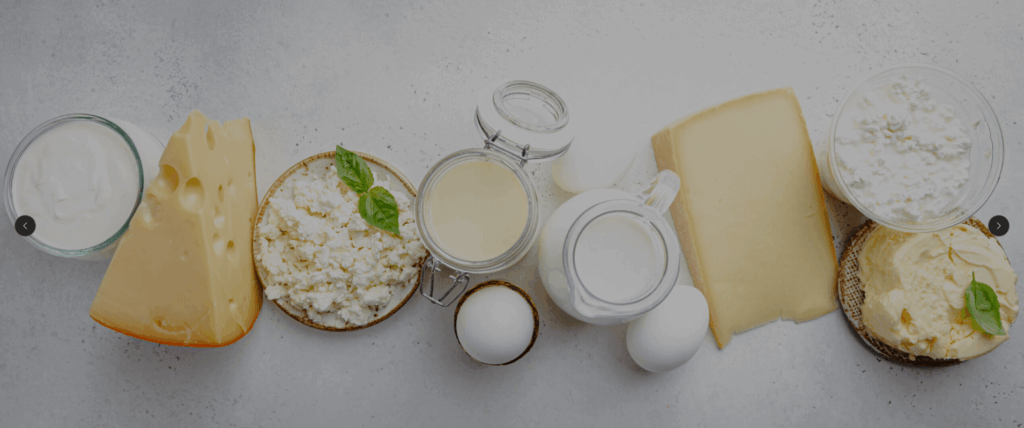June 26, 2025 – Dairy and dairy alternatives are essential to the global population, consumed in various forms—from butters and yogurts to milk and protein powders—at every stage of our lives.
Innova Market Insights’ 360 Category: Dairy & Non-Dairy report highlights the key trends shaping both categories, comparing consumer drivers, market dynamics, brand strategies, and product innovation. This report is part of Innova’s broader 360 Category Reports series—comprehensive, in-depth analyses that integrate global trends, consumer insights, and launch data to provide a full view of category evolution. Designed to support strategic decision-making, these reports form a core part of Innova’s 360 approach to uncovering layered opportunities across the food and beverage landscape.
What Key Factors Influence Dairy and Dairy Alternatives?
Despite representing mature categories, dairy maintains steady sales growth with important opportunities for premium positioning. While health considerations influence consumer decisions, taste and quality remain the ultimate purchase drivers.
Dairy trends reveal that consumers prioritize fresh, local, and traditionally sourced products, pushing demand for recognizable, authentic ingredients. This taste-first mentality fuels interest in indulgent flavors and premium eating experiences, while protein fortification has emerged as the leading health-focused innovation. Convenience development tends to be geared toward on-the-move formats. While non-dairy products are still a relatively new category, with strong sales growth, opportunities for new businesses, and regular innovation.
Health benefits drive primary purchase decisions, with sustainability considerations adding an influential secondary layer as consumers seek both personal and environmental benefits. Protein delivery dominates health messaging, while flavor development remains essential—consumers consistently choose flavored varieties over plain options, with palatability profiles gaining market traction. Convenience spans multiple formats, from single-serve portions and portable options to cooking-friendly dairy alternatives that simplify meal preparation.

Why Do Protein Claims Influence Dairy Purchases?
Protein claims are reshaping consumer purchasing decisions across both dairy and non-dairy categories. High protein and “source of protein” claims now influence the majority of consumers when making dairy purchases, while a substantial portion of non-dairy shoppers are similarly motivated by these nutritional promises.
Non-dairy products have followed a similar trajectory, with protein claims increasing. This growth reflects the category’s evolution as suppliers work to address protein content—traditionally a key differentiator for dairy products.
Suppliers are responding strategically by emphasizing specific protein quantities and types, enabling clearer shelf comparisons and helping consumers understand the tangible benefits they’re receiving. This transparency approach is becoming essential for competitive positioning.
Dairy trends reveal that the plant protein landscape continues diversifying beyond established ingredients. While category stalwarts like oat, soy, almond, and coconut maintain their popularity with product developers, innovation is expanding into legumes, algae, and ancient grains. Companies like Italian organic plant-based producer The Bridge are pioneering this trend with products such as quinoa-based beverages, signaling the next wave of protein innovation.
What Macro Factors Impact Dairy and Non-Dairy?
Rising living costs, driven by the pandemic and global conflicts, are forcing consumers—particularly in Western markets—to reassess their purchasing decisions. While dairy remains an essential staple, demand is splitting between budget-conscious everyday options and premium occasional treats. Dairy trends show that non-dairy consumers, motivated primarily by health benefits, demonstrate greater willingness to pay premium prices.
The health of the planet has become consumers’ top priority and overall concern, and this will impact future demand in many areas. The dairy category already suffers from a relatively poor environmental image due to methane emissions and animal welfare, so it will need to adapt to these headwinds. Although health and taste are the most influential considerations for non-dairy customers, the environmental benefits of plant-based diets remain important and add a layer to the category’s positive image.
Personal health ranks as the second-highest consumer concern, shaping product development across both sectors. Dairy can leverage its inherent nutritional advantages while adding targeted fortification—protein, fiber, or probiotics. Non-dairy brands must strategically incorporate recognized nutrients while minimizing ingredients, eliminating additives, and moving away from ultra-processed formulations.
Self-care is becoming important in the health and wellness arena, and consumers are more focused on targeting positive nutrition as a way to prevent potential health problems. Both dairy and non-dairy products can be carriers of the nutrients that support health, as well as other added ingredients that can deliver targeted functional boosts for individual needs.
Financial pressures are driving European consumers toward small treats for mood enhancement. This trend may favor dairy products when plant-based alternatives feel like compromises, particularly for occasional indulgences. Any premium positioning must be justified through clear value propositions, sourcing and traceability for dairy, or enhanced convenience and taste parity for non-dairy alternatives.
What’s Next for Dairy and Dairy Alternatives?
The protein trend continues to evolve, with a growing emphasis on specific types and quantities of protein that will shape the marketplace. However, the future of high-protein products isn’t solely about protein content. Incorporating fiber and other healthy ingredients will enhance their value proposition. Beyond nutrition, eco-friendly sourcing and packaging are poised to become differentiators across both dairy and non-dairy sectors, as consumers prioritize sustainable living.
Innovation will be key in both the mature traditional dairy market and the saturated non-dairy arena. To gain a competitive edge, businesses must focus on creating distinctive, unique selling propositions (USPs) or offering novel taste profiles. There’s also an emerging opportunity for both dairy and non-dairy companies to align with the GLP-1 weight loss trend. Dairy products, alongside those derived from lean proteins like beans, seeds, and grains, can effectively support GLP-1 friendly diets.
A segment of consumers is showing a flexible approach, increasing their consumption of both dairy and non-dairy options. For these “flexitarian” customers, hybrid products that combine dairy with ingredients like pulses or grains present a compelling opportunity. Such innovations could offer superior taste and nutritional advantages for health-conscious individuals compared to purely non-dairy alternatives.
This article is based on Innova’s Dairy & Dairy Alternatives in Europe report. This report is available to purchase or with an Innova Reports subscription. Reach out to find out more
